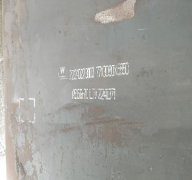Product List
Gangsteel Material Solution
Email: admin@gangsteel.com
Sales: jack@gangsteel.com
ASME SA 516 Gr 70, equivalent to ASTM A516 Grade 70, is a widely used carbon steel plate specification for moderate- and lower-temperature pressure vessels in industries such as oil and gas, petrochemicals, boilers, and power generation. Known for its excellent weldability, strength, and toughness, this material is critical for applications requiring reliable performance under pressure and varying temperatures. One key property of interest to engineers and manufacturers is its hardness, which influences its machinability, wear resistance, and suitability for specific service conditions. This article explores the hardness values of ASME SA 516 Gr 70, including factors affecting hardness, typical ranges, measurement methods, and practical implications for industrial applications.
Hardness is a measure of a material’s resistance to deformation, typically assessed through indentation tests such as Brinell, Rockwell, or Vickers. For ASME SA 516 Gr 70, hardness is not explicitly specified in the ASME Section II Part A standard, as the focus is primarily on tensile strength (485–620 MPa), yield strength (≥260 MPa), and elongation. However, hardness is often evaluated in practice to ensure the material meets quality requirements, particularly for welding, forming, or service in corrosive environments like sour gas (per NACE standards).
Several factors affect the hardness of SA 516 Gr 70:

While ASME SA 516 Gr 70 does not mandate specific hardness values, industry data and material test reports provide typical ranges based on empirical measurements. Hardness is commonly reported in Brinell Hardness Number (HB), Rockwell Hardness (HRB), or Vickers Hardness (HV), depending on the testing standard used (e.g., ASTM E10 for Brinell, ASTM E18 for Rockwell).
These values are approximate and vary based on plate thickness, heat treatment, and specific mill practices. For instance, thinner plates (<25 mm) may exhibit slightly lower hardness due to faster cooling rates during rolling, while thicker plates or normalized material may trend toward the higher end of the range.
Normalization in SA 516 Gr 70N results in a finer, more uniform microstructure, which typically increases hardness by 5–15% compared to the as-rolled condition. This is beneficial for applications requiring enhanced toughness or resistance to stress corrosion cracking, but it may necessitate adjustments in machining or welding parameters due to the slightly harder material.
Hardness testing for SA 516 Gr 70 typically follows standardized procedures:
In practice, hardness tests are conducted on mill test certificates (MTCs) or during quality control to verify material consistency. For critical applications, such as sour service (NACE MR0175/ISO 15156), maximum hardness limits (e.g., 22 HRC or ~237 HB) may be specified to prevent hydrogen-induced cracking.
The hardness of ASME SA 516 Gr 70 has several implications for its use in industrial applications:
The hardness properties of SA 516 Gr 70 make it ideal for:
The hardness of ASME SA 516 Gr 70 typically ranges from 130–180 HB (as-rolled) to 140–200 HB (normalized), influenced by heat treatment, composition, and manufacturing processes. While not explicitly specified in the ASME standard, hardness is a critical property for assessing machinability, weldability, and service performance. Normalized SA 516 Gr 70N offers slightly higher hardness and improved toughness, making it preferable for low-temperature or high-integrity applications. Engineers and manufacturers should refer to material test certificates and conduct hardness testing (e.g., Brinell, Rockwell, or Vickers) to ensure compliance with project specifications, particularly for critical applications like sour service. For precise hardness requirements, consulting the latest ASME Section II standards and supplier data is essential.
ASTM A516 GR 70 equivalent materials is such as ASME SA516 GR 70, EN 10028 P355GH, and BS1501 224-490 A & B, sh
we supply high-quality A516 Gr 70 steel plate for pressure vessel applications and other standards like ASTM A2
EN10028-2 P355GH for High-Strength Low-Alloy Columbium-Vanadium Structural Steel EN10025-2 S355J2 Structural St
We export A240 304L Stainless Coil 2B, NO.1 No.4 surface, the thickness 0.1mm to 3mm, 3mm to 22mm, Mother mill